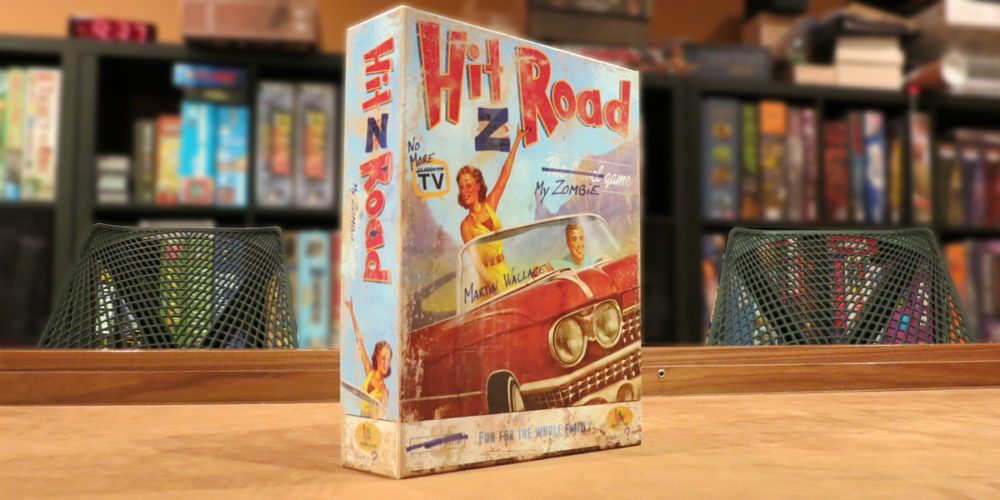
At a Glance
Hit Z Road is a road trip through hell. More accurately, it’s a trip on Route 66, from Chicago to Los Angeles, during the zombie apocalypse. This 1-4 player game from Space Cowboys & Asmodee is for players age 12 and up will take about an hour to play. It’s a really good game and the art on this thing… the art… wow!
Components
I fully admit to being a design snob. There are some good games I won’t play because I hate the way they look and their artwork or iconography take me out of a game. I also will begrudgingly allow that I have more than a handful of games in my collection that are pretty crummy to play but have really beautiful art. At the intersection of these two classifications, you can now find Hit Z Road. It’s not only a good, challenging game to play, but it has great art. Allow me to rephrase. It’s not just great art, but Hit Z Road has some of the best art direction I’ve seen in a board game–ever. In this game, no detail was too small. It’s an amazing testament to what’s possible in game art when given budget and creative direction. The team of seven that put this game’s visual look together are to be commended for a job incredibly well done.
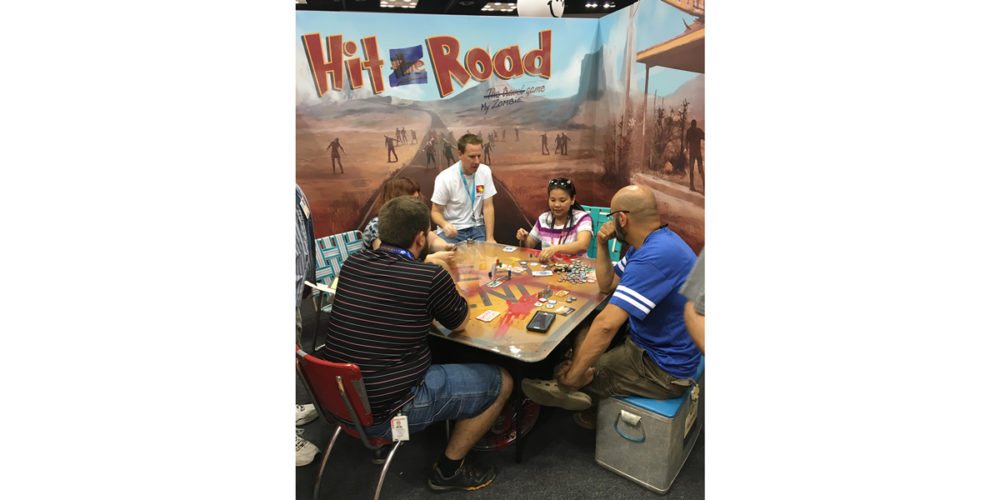
There are 80 cards, over 100 pieces of lusciously thick and well-perforated cardboard, and more than three dozen wooden tokens of different types. All of it is done perfectly. The premise for the game is that a kid put these components together, a hodgepodge of bits and pieces found on a cross-country run to escape zombies. The kid, as the story goes in the rulebook, which looks like a scrapbook of news, comics, photos, packets of clozapine, and other paper collected on the way, is Martin Wallace. While Martin narrates the rulebook and provides snapshots of the drive to LA with his parents and sister, Wallace is really a (grown-up and not living in a zombie apocalypse) well-known game designer with dozens of easily recognized titles to his credit.

Resource tokens are bottle caps of three kinds. Gas Cola represents the gas resource, while Colt Beer caps represent bullets and Ginger Flash looks a bit like a sports drink and represents adrenaline, the third resource. The caps are printed to appear 3D and rather than a simple, circular cutout, the caps have fourteen points on them, making them feel like actual bottle caps in your hand. More detail was given to the initiative tiles. They are made up of restaurant loyalty cards (four more stamps required for a free burger), a name tag, credit card, and a health insurance cards, what young Martin Wallace might have found in a couple of roadside wallets. The initiative cards have equal attention paid to their reverse side and the initiative number can be found on both sides, so it doesn’t matter how the card has landed when you toss it in front of you.

The cards are all made on high-quality stock and the artists were given free rein in creating these. On the 76 adventure cards that make up the bulk of the game, there are three different backs and all are distressed, but inconsistently, which makes the aging seem much less uniform. On the fronts, every card is different, each a unique scene of the horrifying trip westward. Some denote good things, a billboard for a gun show, a gas station, or a vault of supplies. Most don’t. There are things chasing you, lurking from the shadows, or staggering, out of focus, in the foreground. The zombie clown is terrifying. These aren’t the only cards. Sized just a bit larger, so not to confuse, the epilogue cards provide bonuses at the end of the game for the person with most gas, adrenaline, bullets, and survivors. These are meant to be repurposed from a Ticket to Ride route card, a Cold War: CIA vs KGB card, a Dixit card, and one from 7 Wonders. It’s a nice nod to other games under the Asmodee umbrella.
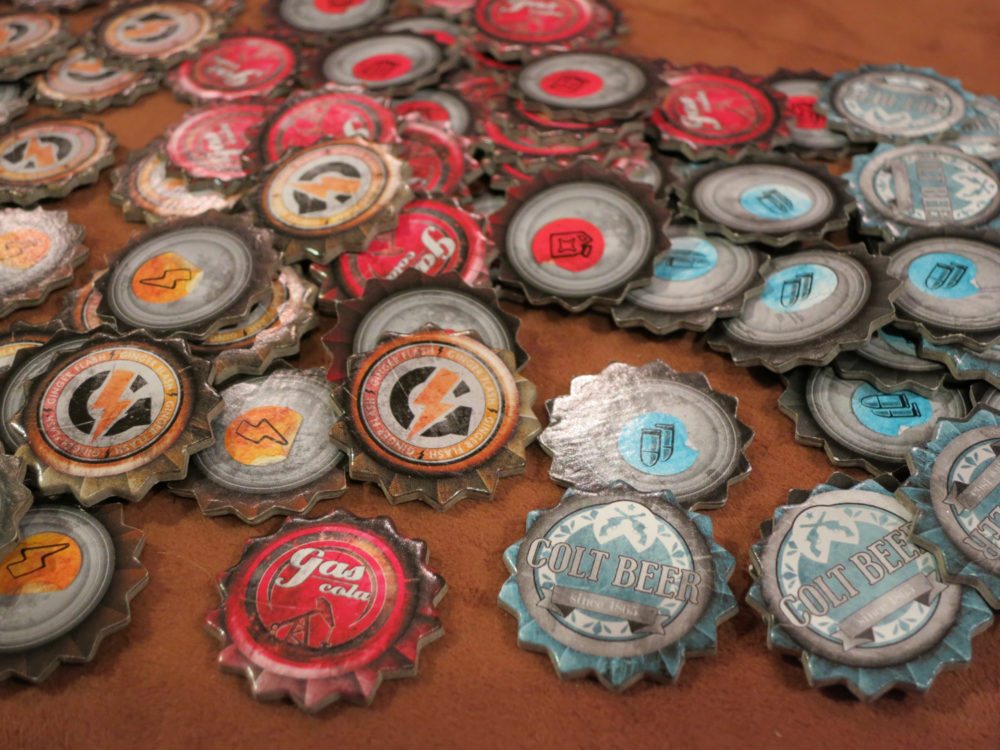
Even the box looks to have been taken from another game, Hit the Road, and reused for this one. On the back of the box are rules to the unrelated Hit the Road game. (This is after removing the temporary, promotional Hit Z Road sheet that the shrink had held in place.) The original game doesn’t look like it was very much fun, judging from the rules. Inside the box, the remaining elements include 10 dice. Seven are black for fighting regular zombies and then three red dice for fighting hordes. The icons on them are clear and easy to understand, but I wish they were a bit heavier. They feel lightweight in your hand and on a couple of occasions, we’ve had them sit on a corner. I guess you take what you can get during the zombie apocalypse. Poor, young Martin. If Panda had only survived the apocalypse.
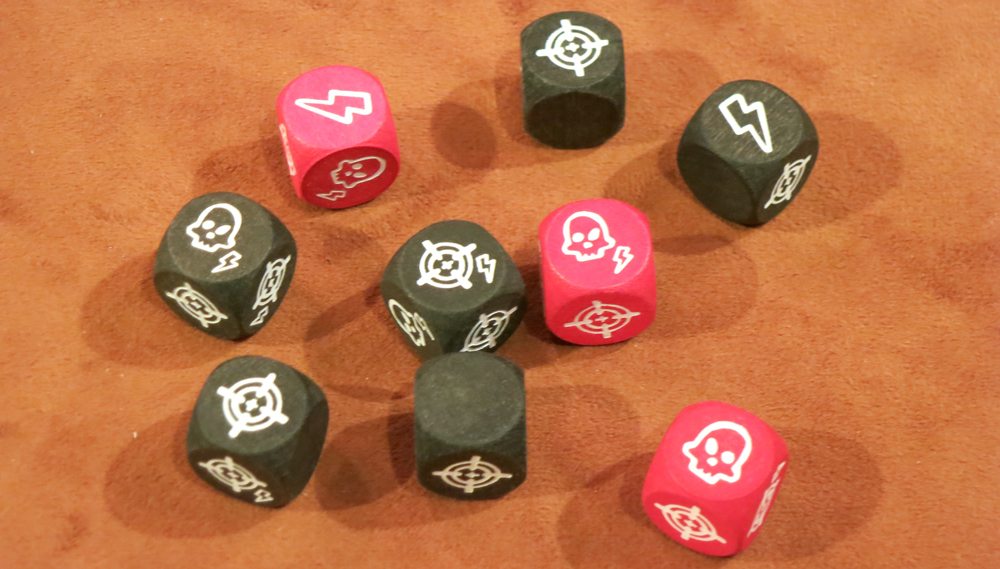
One of the details that snuck up on me during our first game was that the wooden tokens—bidding markers , player, survivor, and zombie tokens—all appear to have received a wash to make them appear even more aged. Their colors are anything but vibrant and they seem a bit dirty. It’s subtle, but couldn’t be accidental.
All in all, it is absolutely brilliant. There is so much theme in this game, the only way it could have more is if it was packed with dripping brains. There is so much cleverness going on here, I full expect to be finding little things on my 10th game. For instance, as I sat down to write this, I noticed that there is a scorepad on the back of the rulebook. There are six categories, but those who score at the lowest level, 0-5 points fall into the “Father Gabriel” category, a nod to the cowardly priest in The Walking Dead television and comic series. When this much thought is put into the components, it gets me excited for what is to come when I actually sit down and play some games…

How to play
OK, after all of that praise lumped on how it looks, how it plays will probably earn some extra scrutiny. Setup is accomplished by giving each player a survivor marker and bidding marker of their color and four grey survivor tokens; these are your followers and zombie fodder. Additionally, each player takes four gas, ammo, and adrenaline tokens (for a total of twelve) and a random initiative token. The auction board is placed within everyone’s reach and all the other tokens, dice, and resources are placed nearby. The adventure deck is assembled by dividing the cards into three stacks, one for each of the levels. This is a simple task because each level of cards has a different back and a notation of its level. Shuffle each deck and blindly remove four cards from each and place those cards in the box. Stack the decks with level 3 at the bottom and 1 and the top. Make sure your estate is in order, that next of kin has been notified, and you are ready to play. (Note: there are variations for 1, 2, and 3 players, but the following outlines play for four players.)

The game is comprised of eight rounds, each made up of three phases: planning, auction, and encounter. During the planning phase, eight cards are dealt from the adventure deck in four rows of a pair of cards, each. Next, the auction takes place. During this phase, players bid in order of initiative tokens. They place their bidding token on the auction board, showing how many resources that are willing to give up to be able to choose early during the encounter phase. Players do not have to bid and can save their resources, but they may end up with a horrible encounter. Bidding continues until all players have passed and a player who passed may reenter the bidding, as long as at least one person has bid since they passed. When all bidding is complete, players trade initiative token so that the player who bid most is #1, second is #2, and so on. If more than one player didn’t bid, their initiative remains, relative to each other, from the previous round. Players pay their pledged resources, the type is up to them, and bidding markers are moved back to zero.

Next, players move on to the encounter phase, this is where blood is spilled, screams are cut short, and zombies feast. Players take turns, according to initiative, choosing and resolving a pair of cards, known as a path. All available cards are visible, so players know what they are getting into and what they are leaving for the other survivors. After selecting a row, the cards are resolved with the left card first, then the right card. There are three key elements to a card. First, there are icons in the upper left of the card that show what resources the player is able to scavenge in this encounter. The player receives these from the bank before moving on to the event and fight portion of the card. Some cards don’t have event or fights, making these cards more desirable. Events are either black text, which have to be resolved immediately, or red text, which are rules that affect your impending fight. Events are seldom (though sometimes) good news.
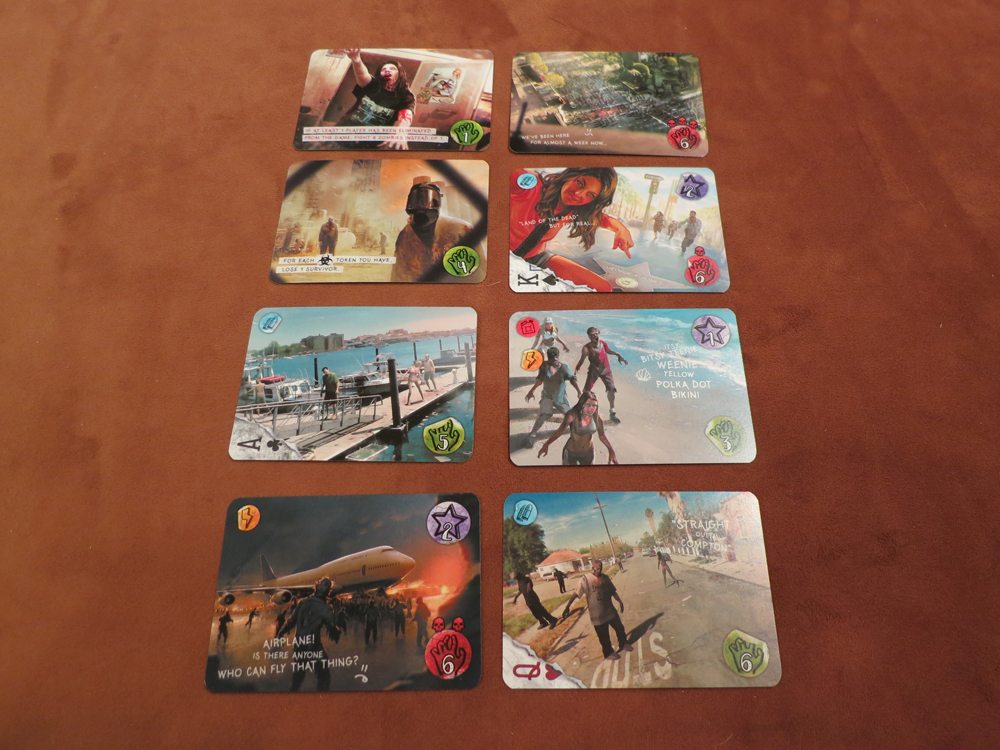
Fights are signified by a green or red hand and a number, which designates how many zombies must be battled. Place the appropriate number of zombie tokens on the card, pull on your protective face screen, and get ready to meet your undead neighbors. During the fight, players first have a chance to turn in ammo resource tokens. For each one sacrificed, the player can roll two dice as part of a ranged attack. During this attack, only target reticles count. For each one you roll, remove a zombie from the card. You only get one chance at a ranged attack; after that, it’s on to melee. You get one die for each survivor, including the token of your color. Roll these and check the results. Blanks mean nothing, reticle is a zombie kill, and a skull means one of your survivors is gonna take a short dirt nap, before coming back as a more decaying, less engaging version of its formal self. However, there are three die faces that include a lighting bolt: a skull, reticle, and one that’s just a bolt. These indicate adrenaline can be spent. In the case of the skull, you can save your survivor by spending adrenaline. With the reticle and the single bolt, an adrenaline cap sacrificed will earn you another dead zombie in the graveyard.
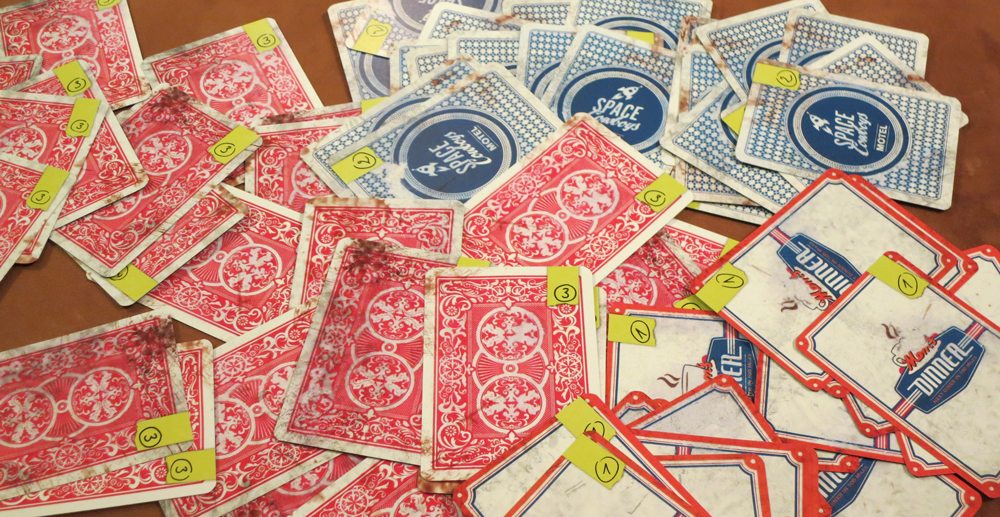
A red hand signifies the horde and this icon has a number of skulls above it. The skulls show how many red dice must be substituted for black dice. Red dice are far more brutal and difficult, however, there is an option when your back is against the wall. Spend two gas resources and you can run away (unless the card says you can’t). You don’t get to keep the card and its points (if it had any) like you would, had you battled the zombies and won. But at least you’ll live to fight another day, Brave Sir Robin. This continues, getting progressively worse and more hopeless as the deck works its way to level 2, then 3, dwindling and becoming far more difficult the closer you get to La-La land.

Not everyone will make it, it’s almost guaranteed. And there are rules for dealing with the auction and encounters if a player has gone to the other side. However, if a round ends and you’re the only one alive, you win! Enjoy your time alone as the last living meat sack with a soul. If two of you hit the Hollywood Hills, still breathing, there are a number of bonuses that are added and then tie-breakers for determining the winner. Additionally, there are tokens that can mean good things for you (but more frequently mean bad), and, as mentioned, different rules for playing 1, 2, or 3 players.

Verdict
You have to question the reasoning of a family that decides to leave America’s third largest city to head to its second largest. Wasn’t there a small town with plentiful resources along the way, not to mention a more limited supply of the undead? Then again, that would make for a pretty lame game. As it stands, Hit Z Road is pretty good.
Compared to Martin Wallace’s other games, it’s lighter fare, lower on strategy and with more emphasis on luck. At first, this was a bit of a downside for me. I prefer a bit more strategy, but I have a couple of game groups that prefer luck because they aren’t regular gamers, versed in game strategy. For them, Hit Z Road is perfect. However, as I played more games of Hit Z Road, I discovered that I enjoyed the higher luck aspect of the game more and more. The bidding, resource management, and encounter choices provided opportunity for some strategy, but the dice rolling injected a healthy dose of luck–and I truly believe this is a very, very good thing.
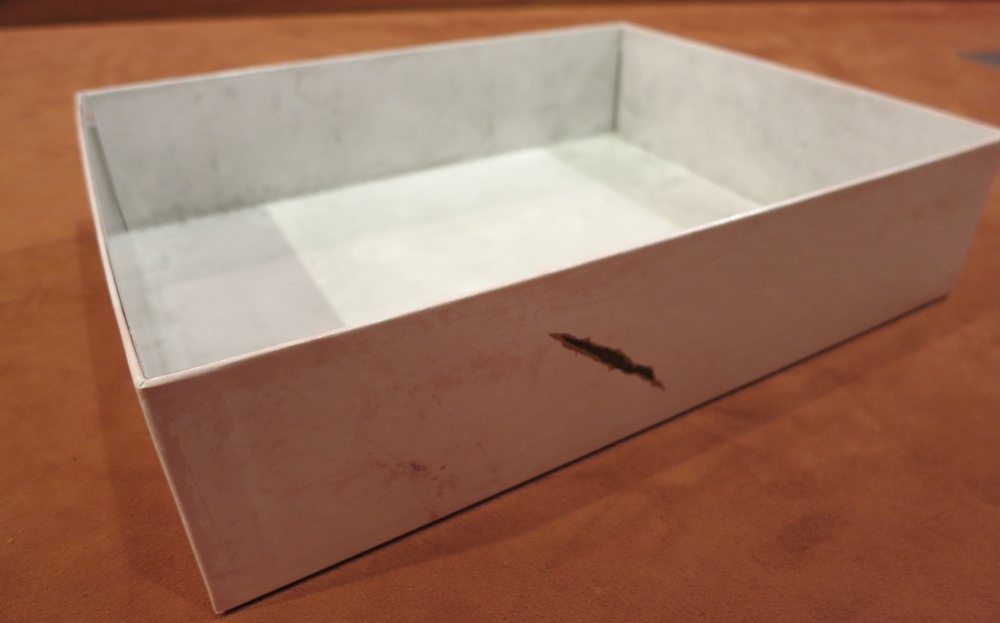
In order for any zombie encounter game to be effective, it has to have a strong element of luck. It’s this uncertainty that helps to create an atmosphere of anxiety and questionable outcomes. Each roll may result in a zombie being dispatched or, almost as likely, you losing a survivor. As we played, in roll after roll, players cheered when a player rolled all reticles (or no skulls) and, equally, words of empathy when a player’s survivor ranks fell. It was an interesting phenomenon and one not normally seen outside of cooperative games. Although we were competing against each other, we were united in our battles against the undead. Still, although we were cheering for each other, the amount of player interaction is low, outside the auction and bidding. Despite that, players who lost their final survivors with several rounds yet to go tended to stick around to watch the outcome of the game, a good sign.
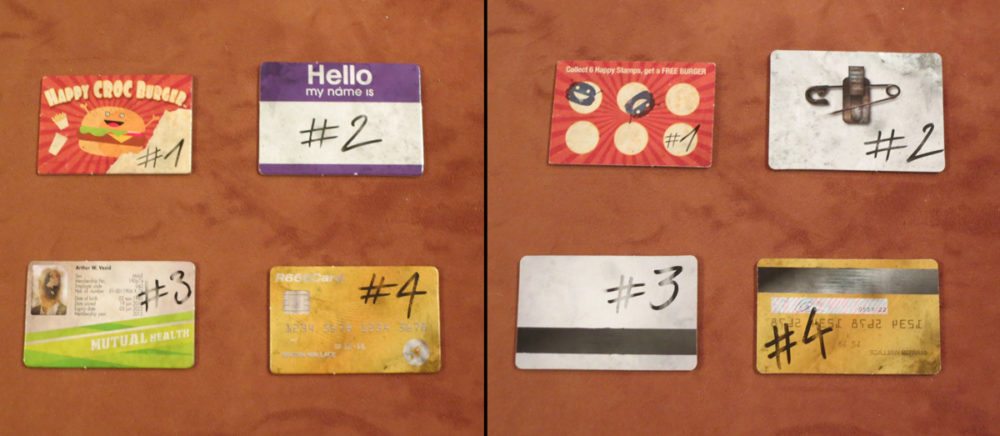
The age recommendation of 12 and above is probably accurate. The artwork on the cards can be pretty scary and some players don’t make it to the end of the game, which might frighten younger players. I thought that the bluffing in the auction and the risk taking in resources pledged helped build an atmosphere fraught with danger and anxiousness.
You feel a real sense of progression as you move through the game. Since the encounter cards are sorted by level, players get a sense of movement, of things becoming worse. Through the stories that the cards tell, the game is immersive. Yes, it’s another zombie game. But it’s a good zombie game, it’s an absolutely stunning game, and it’s worth checking out. Hit Z Road is available now.

Disclosure: GeekDad was sent a sample of this game for review purposes.
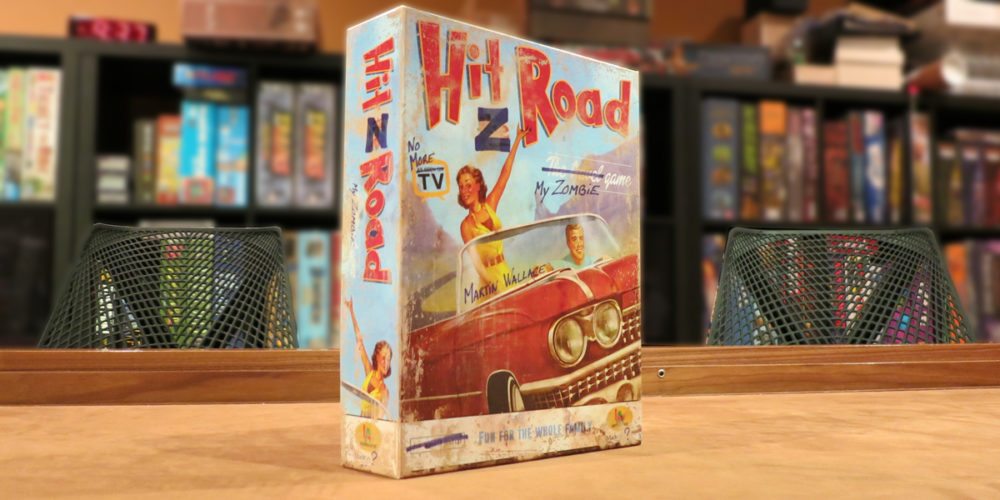



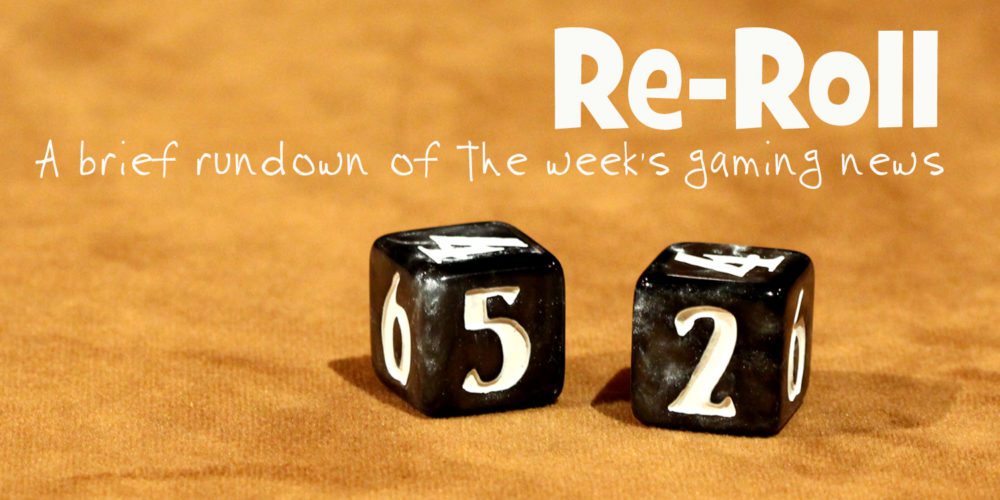
Just wondering, how does this compare to Run, Fight or Die? I know the setting is different, but there is also a bunch of dice. Thanks.
Hi! I’ve got a full GeekDad review of Run, Fight or Die here: https://geekdad.com/2014/09/zombies-gen-con/
I haven’t played Hit Z Road myself yet, but based on Dave’s review I’d say they are actually quite different other than that they both have a zombie theme. The dice-rolling in Run, Fight or Die is a little more Yahtzee-like: you’re trying to get certain combinations of dice to have particular effects. In this one, you resolve each die individually regardless of what the other dice show.